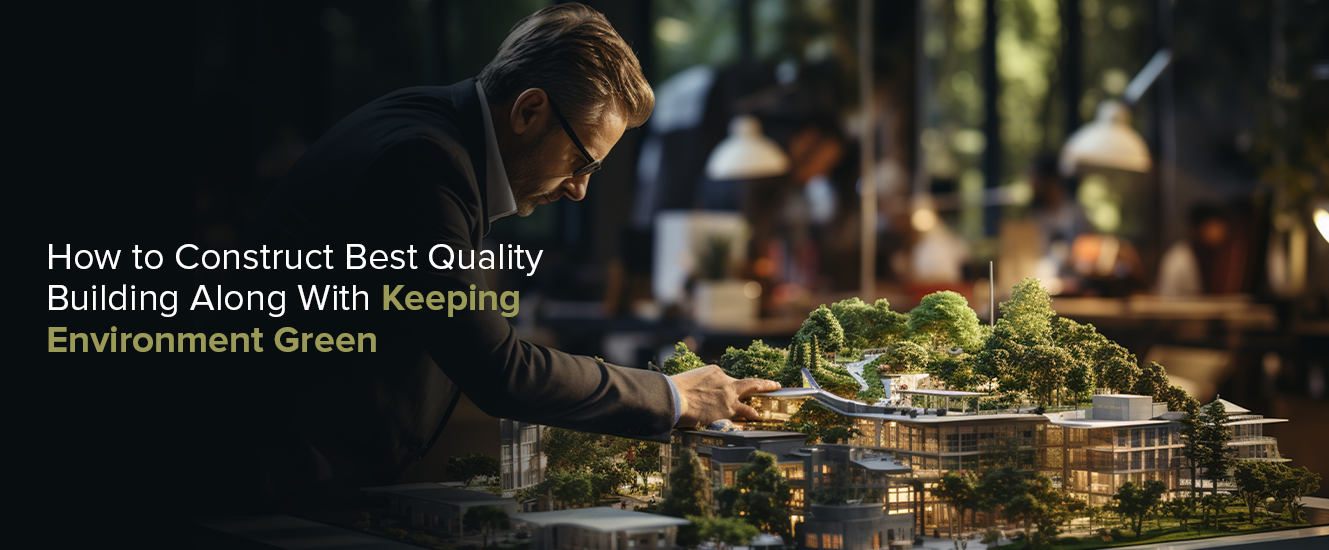Let’s face it, constructing a building is a big deal, but doing it in a way that respects the environment is an even bigger win. But here’s the thing, building awesome doesn’t have to mean sacrificing the environment.
These days, eco-friendly features can be a major selling point. Also, it’s about smart choices that make your structure a boss move for both you and Mother Nature. So, let’s explore the top 9 ways to construct quality buildings and keep the environment green.
1. Energy-Efficient Design
Start at the drawing board. Look for a design that maximises natural light, reducing the need for artificial lighting during the day. Strategically position windows to allow cross-ventilation, keeping the indoor spaces naturally cool. This not only saves energy but also creates a more comfortable living or working environment.
2. Sustainable Materials
When it comes to construction, the materials you choose matter. Opt for sustainable and locally sourced materials to minimise the environmental impact. Look for options like recycled steel, reclaimed wood, and low-impact concrete. These materials not only reduce your carbon footprint but also contribute to a healthier ecosystem.
3. Green Roofs
Take your building to the next level by incorporating green roofs. Not only do they add a touch of nature to the urban landscape, but they also improve insulation, reduce energy costs, and mitigate the urban heat island effect. Plus, they provide a habitat for birds and insects, promoting biodiversity.
4. Solar Power Integration
Embrace the power of the sun! Incorporating solar panels into your building’s design can significantly reduce its reliance on traditional energy sources. Solar power is not only clean and renewable but also a smart long-term investment that can lead to lower electricity bills over time.
5. Efficient Insulation
Don’t let your building leak energy like a sieve. Invest in quality insulation materials to regulate indoor temperatures effectively. Proper insulation reduces the need for constant heating or cooling, leading to lower energy consumption and decreased environmental impact.
6. Green Spaces
Integrating green spaces into your building design not only adds aesthetic charm but also contributes to a healthier environment. Rooftop gardens, vertical green walls, and communal green areas help improve air quality, reduce heat, and provide a relaxing haven for inhabitants. It’s like bringing a piece of nature into the urban jungle.
7. Waste Reduction and Recycling
Construction generates a lot of waste, but that doesn’t mean it has to end up in a landfill. Implement a comprehensive waste management plan that emphasises recycling and reusing materials. This not only reduces the environmental impact but also helps conserve valuable resources.
8. Smart Water Management
Water is a precious resource, and managing it wisely is crucial. Install water-efficient fixtures, implement greywater recycling systems, and consider using permeable surfaces in landscaping to allow rainwater to recharge the groundwater. Implementing a rainwater harvesting system can not only reduce the demand for local water sources but also provide a sustainable water supply for non-potable uses like irrigation and flushing toilets. Every drop saved is a win for the environment.
9. Community Engagement
Last but certainly not least, involve the community in your green building journey. Educate neighbours, workers, and future occupants about the environmental benefits of your construction choices. Foster a sense of pride and responsibility for the sustainable practices employed, creating a ripple effect of positive change.
Sum Up
In a world where every action counts, constructing quality buildings while keeping the environment green is a much greater responsibility. By implementing these green strategies, you’re not only creating a lasting structure but also contributing to a healthier, more sustainable world. So, let’s leave a positive mark on Mother Nature and build a future where quality construction and environmental harmony go hand in hand.


